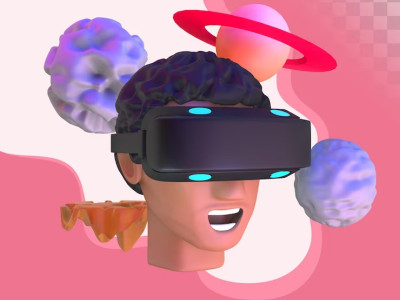Exploring the dynamic technology landscape driving the gaming industry today
The gaming industry is in the throes of a remarkable technological revolution that is reshaping how players interact with virtual worlds. Advancements in cloud gaming, virtual and augmented reality (VR/AR), ray tracing technology, cross-platform gaming, and the thriving esports scene are collectively revolutionizing the gaming experience. In addition, the surge in mobile gaming is bolstering the industry's reach, particularly among online slots enthusiasts. This feature report delves into these transformative trends, exploring their impact on accessibility, immersion, and visual fidelity within the expansive gaming universe.
VR and AR: Elevating Immersion and Realism:
Among the latest innovations, virtual reality (VR) and augmented reality (AR) stand out. VR plunges players into immersive alternate realities, while AR overlays digital elements onto the real world. These technologies redefine gaming's landscape, enhancing immersion and realism. A report by the Worldwide Information Company predicts that AR/VR will generate $72.8 billion by 2024, with gaming accounting for 80% of this revenue. The Asia Pacific region leads the global VR gaming market, capturing 40% of its share. As these technologies evolve, gaming experiences are propelled to new heights, fostering emotional connections and interactivity.
Akshay Munjal, Founder and CEO at Hero Vired, emphasizes that VR and AR not only transform gameplay but also offer educational potential. Hero Vired's FutureTech courses leverage VR and AR to equip individuals for roles across the gaming sector, from game design to event management, thereby driving industry growth and innovation.
“The Indian AR and VR market is set to grow at an impressive CAGR of 14.63%, from 2023-2027, culminating in an estimated market size of US$1,078 million by the year 2027. With this rapidly growing market volume, VR and AR are also revolutionizing gaming, offering immersive experiences that engage players experientially. VR plunges players into new realms, heightening their presence and emotional connection through headsets that allow interaction with environments and characters. AR overlays digital elements onto the real world, enhancing player-environment interaction. These technologies push immersion, interactivity, and realism to new levels, transforming how players experience games. In our FutureTech courses at Hero Vired, we harness VR and AR's educational potential. Our Certificate Program in Extended Reality (VR+AR) with Snapchat and Unreal Engine, and the Certificate Program in Gaming and Esports with NODWIN Gaming, equip applicants for diverse roles in the gaming sector, from game creation, design to event management, enhancing the industry's growth and innovation.” he mentioned.
Whereas according to Saket Dandotia, CTO, VideoVerse, “Enter the realm where reality meets imagination – with Augmented Reality (AR) and Virtual Reality (VR), gaming has turned into an exhilarating fusion of fantasy and reality, taking gameplay to new heights. As per Worldwide Information Company, AR/VR is projected to generate $72.8 billion by 2024, with gaming leading the charge, contributing 80% of this revenue and Asia Pacific region spearheading the global VR gaming market with a commanding 40% share.”
While talking to Adgully, Shravan Dhar, Sr, Software Engineer, Gamezop, he said, "AR and VR are revolutionizing gaming by introducing groundbreaking gameplay mechanisms and offering immersive experiences. For example, VR has the capability to create a simulation of piloting a spaceship, whereas AR can allow players to scan real-world objects to gain in-game abilities. While the evolution of AR/VR technology in India shows promise, it remains in its infancy. For these technologies to truly take root and thrive, there's a need for an all-encompassing ecosystem that includes affordable devices, a range of content, and viable applications. Current hurdles center on concerns like the user-friendliness of the technology and the associated costs. Premium VR systems, which include both the hardware and software, often come with a hefty price tag, making them less accessible to the average Indian gamer. Even if state-of-the-art gaming becomes readily available in the near future, it might only cater to the luxury market, lacking the widespread appeal needed to bring about a major shift in the gaming sector."
Cloud Gaming's Liberation of Play:
Cloud gaming is a game-changer, liberating players from hardware limitations. Services like Google Stadia, NVIDIA GeForce Now, and Xbox Cloud Gaming enable the streaming of high-quality games on various devices, transcending the need for powerful gaming hardware. Akshay Munjal highlights that cloud gaming reshapes traditional models, bridging accessibility gaps and enabling global peer-to-peer interactions. Although cloud gaming introduces new revenue models, it coexists with traditional gaming approaches as players gravitate toward preferences. “To sum up, the gaming sector is embracing the growth of cloud gaming services by making infrastructure investments, establishing partnerships, and adopting new business models. Although cloud gaming is convenient and accessible, it also has issues with network infrastructure, latency, and ownership structures. As the gaming industry navigates a new era of experiences that prioritize accessibility, convenience, and changing monetization techniques, the impact on old gaming models is significant.” he said.
Saket Dandotia underscores the collaborative spirit between the gaming industry and streaming service platforms, fostering accessibility and hybrid gaming experiences. As the industry navigates evolving gaming models, the significance of cloud gaming cannot be understated. “To keep up with the increasing prominence of cloud gaming, the industry is collaborating with streaming service platforms, enabling accessibility without needing high-end hardware. Collaborations between conventional game developers and technology firms have resulted in the influx of cloud gaming platforms. However, many players opt for hybrid approaches, providing a selection of locally installed and streamed games to accommodate a wide range of player preferences.” mentioned Saket.
In the views of Shravan Dhar, "As the gaming industry navigates the rise of cloud gaming services, it's undergoing transformative shifts. Thanks to Infrastructure as a Service (IAAS), developers are able to focus on core business logic instead of being bogged down by technical complexities of hardware management and provisioning. The need to invest in personal data centers is fading, leading to significant cost savings. Moreover, gamers can now stream high-quality games on commonplace devices such as standard laptops or smartphones, provided they have a reliable internet connection. This accessibility is democratizing the gaming realm, ushering in a broader audience and sparking demand for a diverse array of games."
AI and ML: Revolutionizing Gameplay:
In 2023, artificial intelligence (AI) and machine learning (ML) redefine the gaming landscape. Developers harness these technologies to streamline design processes, personalize gameplay experiences, and create intelligent non-player characters. Players enjoy adaptive difficulty levels and intelligent assistance, intensifying engagement and tailoring experiences. Procedurally generated content ensures each playthrough feels unique, preventing predictability and boosting replay value.
Sanket Dandotia illustrates, “AI's role in crafting dynamic game universes, elevating replayability through algorithmic innovation”. AI-driven procedural generation revitalizes player experiences, aligning with Akshay Munjal's perspective that it prevents predictability, ensuring games remain enticing.
Shravan Dhar mentioned, "Artificial Intelligence (AI) has become an integral tool in the realm of procedurally generated content in video games. Procedural generation refers to the use of algorithms to automatically create content, such as levels, landscapes, characters, or even stories, rather than manually designing them. AI can modify game challenges on-the-fly based on player performance. AI can identify and implement complex patterns, making in-game worlds more diverse and intricate. For example, in generating a forest, AI can ensure a realistic distribution of trees, plants, and wildlife based on certain rules or patterns, mimicking real-world ecosystems."
5G: A Catalyst for Innovative Experiences:
5G technology is revolutionizing online gaming by eliminating connectivity constraints. Cloud gaming and VR/AR are particularly poised to benefit from 5G's high speeds and low latency. The fusion of 5G with AR/VR holds promise for democratizing gaming, making immersive experiences accessible even to those without high-end hardware. With 5G's impending launch in India, the gaming landscape is set to flourish, empowering gamers in tier two and three cities and ushering in a new era of virtual adventures.
Conclusion: Embracing the Gaming Renaissance:
The gaming industry's ongoing technological revolution reshapes accessibility, immersion, and innovation. VR/AR technologies transport players to alternate realities, while cloud gaming liberates them from hardware constraints. AI and ML redefine gameplay, and 5G paves the way for novel experiences. The future of gaming is a dynamic convergence of technology and imagination, where players become explorers of boundless virtual worlds.


















Share
Facebook
YouTube
Tweet
Twitter
LinkedIn